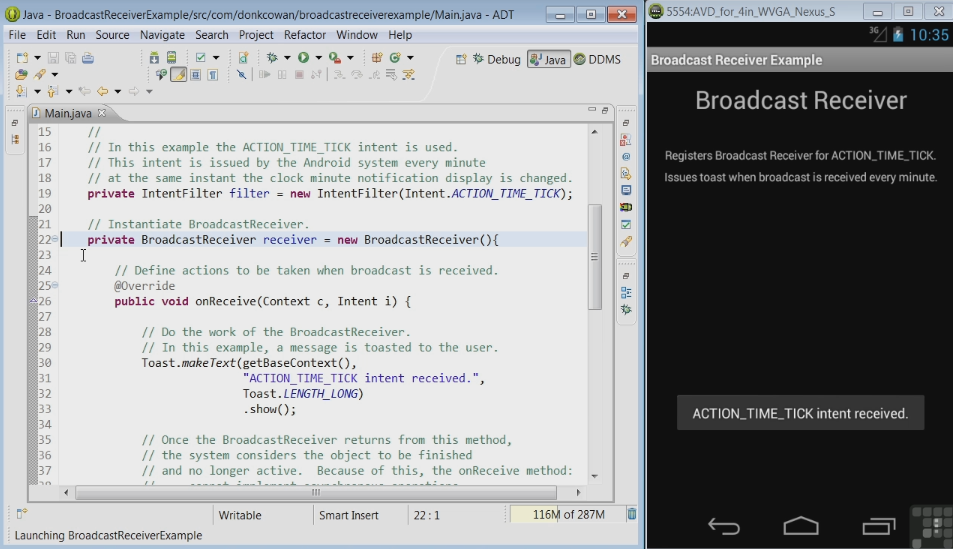Android Database Query Display
/This is part of the Android Quick Code Access series of posts. The code below displays the results of a Database Query. You'll need to run the Query code in a background thread in your production version.
// Database Display Activity.
public class DatabaseDisplayActivity extends ListActivity {
// Database display columns.
private static final String[] PROJECTION = new String[] {
COLUMN_NAME_1, // 0 Position
...
}
@Override
// Activity onCreate method.
protected void onCreate(Bundle savedInstanceState) {
super.onCreate(savedInstanceState);
// Database Query.
Cursor cursor = managedQuery(
MyContent.CONTENT_URI,
PROJECTION,
null,
null,
MyContent.DEFAULT_SORT_ORDER
);
// Cursor columns to display.
String[] dataColumns = {
COLUMN_NAME_1,
...
} ;
// View IDs for formatting.
int[] viewIDs = {
android.R.id.text1,
...
};
// Adapter for the ListView.
SimpleCursorAdapter adapter = new SimpleCursorAdapter(
this,
android.R.layout.simple_list_item_1,
cursor,
dataColumns,
viewIDs
);
// Binder to display row results.
adapter.setViewBinder(new SimpleCursorAdapter.ViewBinder() {
public boolean setViewValue(
View view, Cursor cursor, int columnIndex) {
// Get row of cursor.
String displayText =
DatabaseUtils.dumpCurrentRowToString(cursor);
// Set text in display.
((TextView) view).setText(displayText);
return true;
}
});
// List Adapter.
setListAdapter(adapter);
}
}
